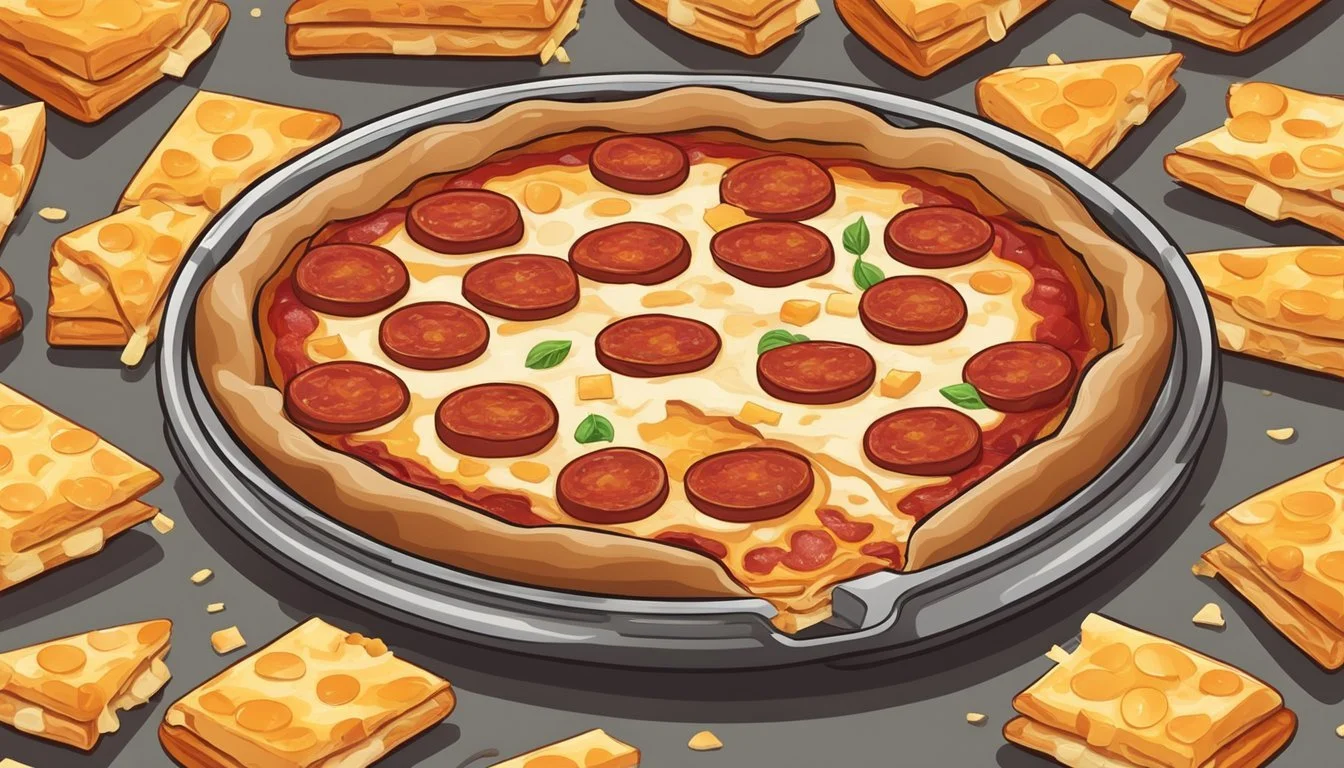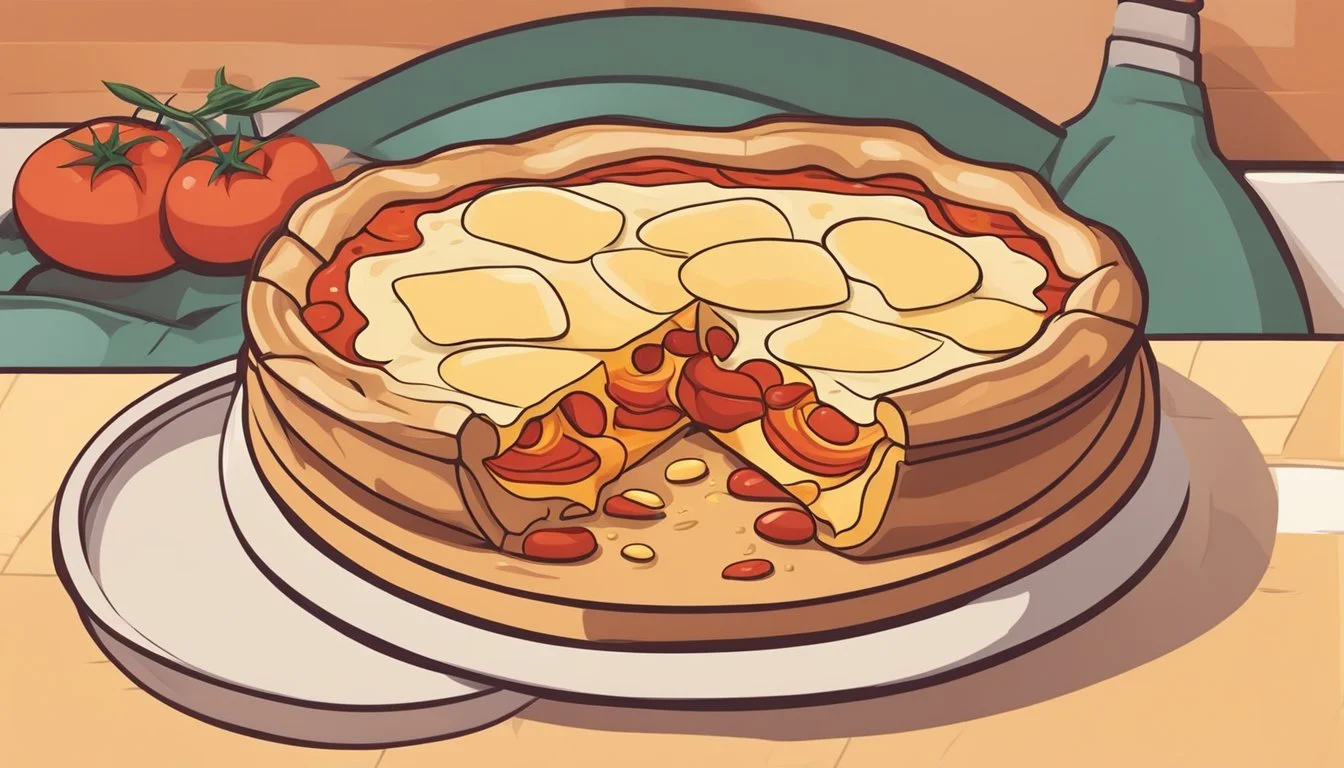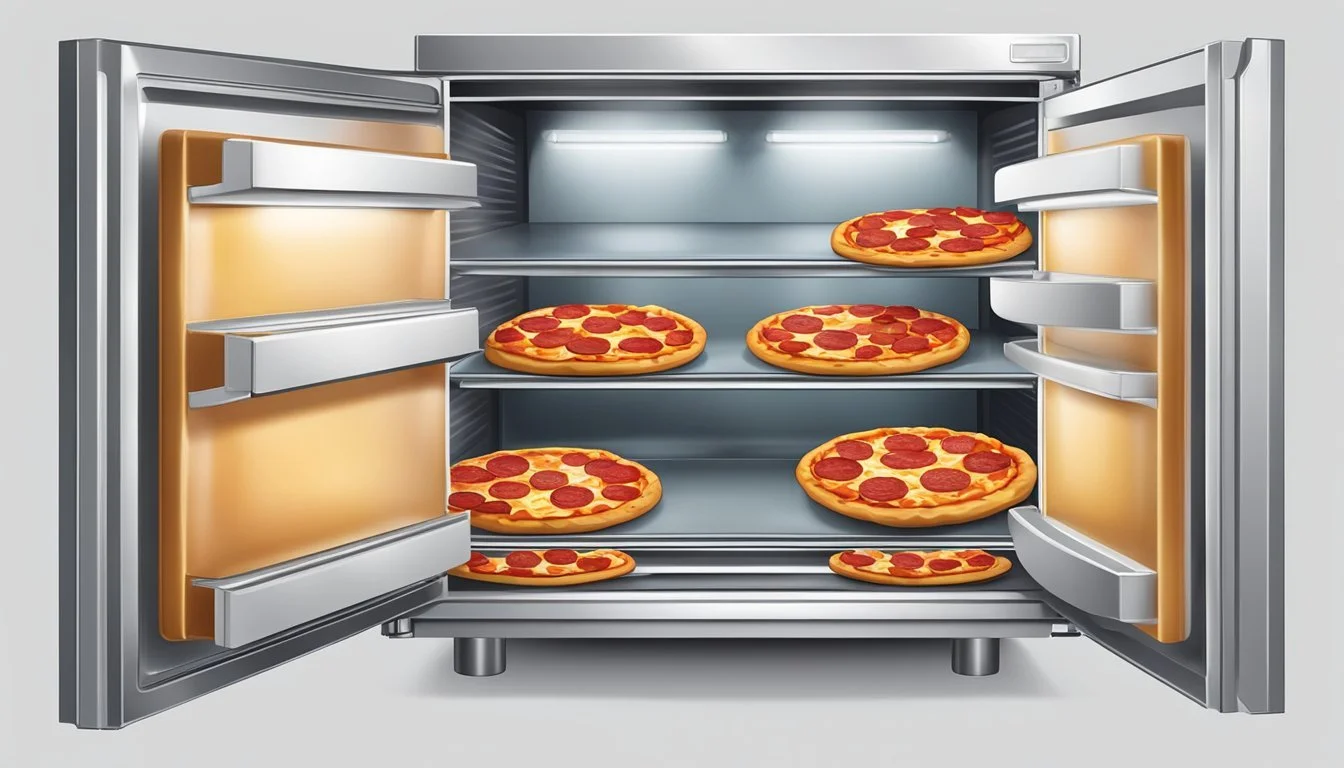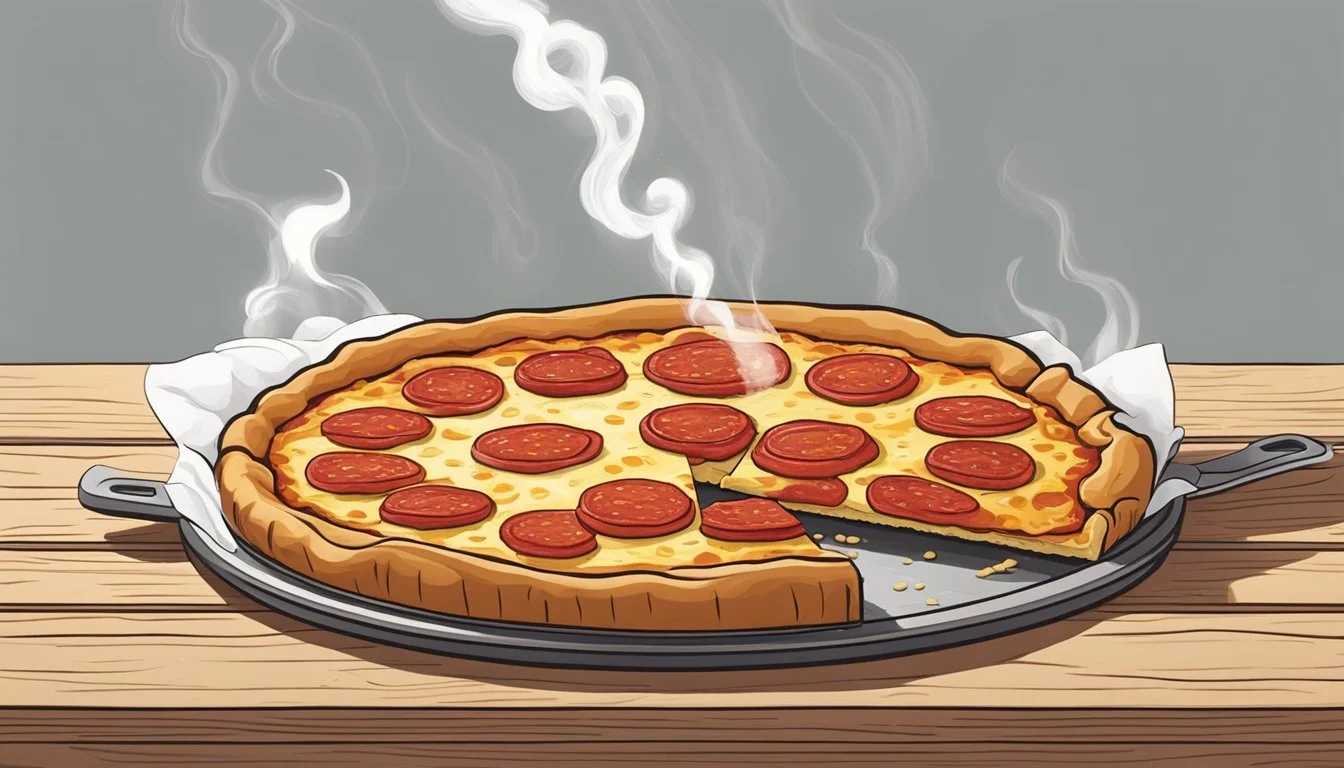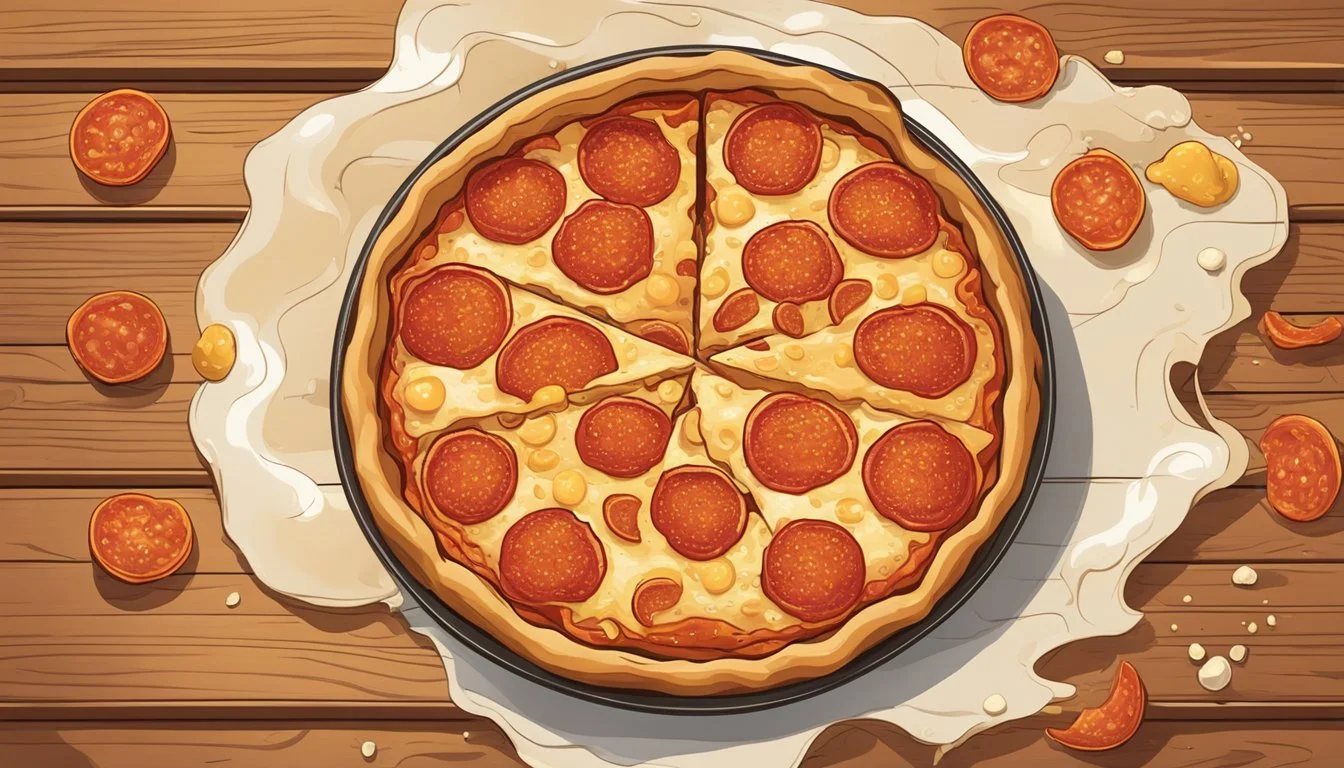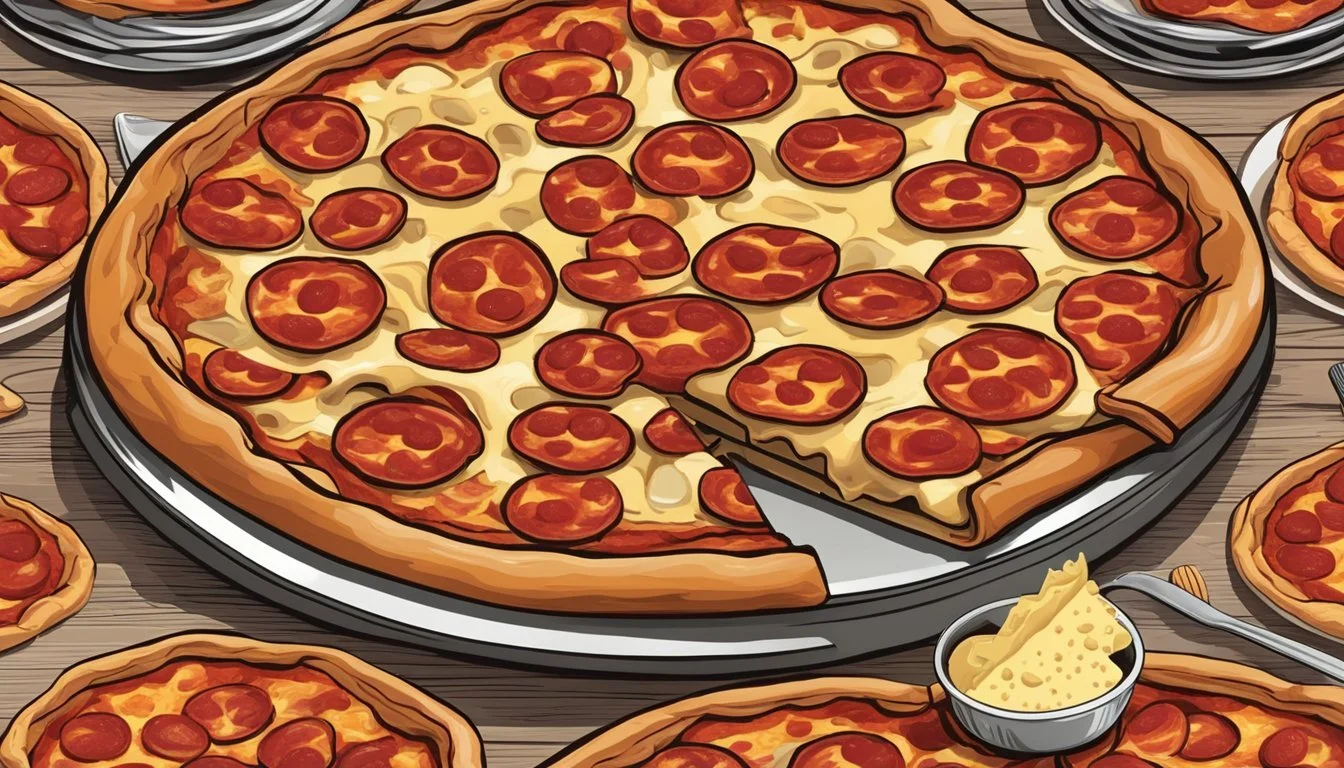How Long Does Deep Dish Pepperoni Pizza Last?
Storage Tips and Shelf Life
When it comes to enjoying a slice of amazing deep dish pepperoni pizza, proper storage is key to making those mouth-watering leftovers last. A deep dish pepperoni pizza can typically last in the refrigerator for 3-4 days if stored properly. This involves wrapping the pizza tightly in plastic wrap or aluminum foil, or placing it in an airtight container to stave off bacteria and maintain its delicious flavor.
The combination of rich tomato sauce, savory cheese, and spicy pepperoni makes deep dish pizza a beloved favorite. Yet, these very ingredients can also affect its shelf life. Storing it correctly not only ensures food safety but also preserves the taste and texture that makes this pizza style so special.
For anyone who has made a deep dish pepperoni pizza using their favorite recipe, knowing how to keep it fresh can save time and reduce waste. Whether reheating in the oven, microwave, or skillet, each method has its perks, ensuring every bite is as enjoyable as the first.
Understanding Deep Dish Pepperoni Pizza
Deep dish pepperoni pizza is a rich and flavorful style of pizza known for its thick crust and generous toppings. This section will explore the key ingredients and recipe specifics, as well as the nutritional profile of this beloved dish.
Ingredients and Recipe Specifics
Deep-dish pepperoni pizza often requires a specific set of ingredients to achieve its distinctive taste and texture. The pizza dough is typically made from flour, water, yeast, and salt, giving it a sturdy base to hold the plentiful toppings. Olive oil is used to brush the pan and coat the dough, ensuring a crispy outer layer.
A tomato sauce usually seasoned with garlic, oregano, basil, and other Italian seasonings is spread over the dough. Mozzarella cheese is a must, often layered generously both under and over the pepperoni slices. Some recipes may also include other cheeses like Parmesan or a mix of Italian cheeses.
Cooking times and temperatures vary, but the pizza is generally baked at around 400-450 degrees Fahrenheit, ensuring the crust is perfectly cooked while the cheese melts and becomes bubbly.
Nutritional Profile
The nutritional content of deep dish pepperoni pizza can vary based on ingredients and serving size. A general nutritional profile includes:
Total Calories: Approximately 300-400 per slice
Fat: Around 15-20 grams, with saturated fat making up about 6-8 grams
Protein: Typically 12-15 grams due to the cheese and pepperoni
Cholesterol: Roughly 40-50 milligrams
Sodium: High, at about 700-900 milligrams per slice
Carbohydrates: Around 30-40 grams, including dietary fiber of about 2-4 grams
Sugar: Approximately 4-6 grams
Vitamins and Minerals: Notably iron, calcium, and some vitamin A from the tomato sauce and cheese
By understanding these components, readers can better grasp the specific flavors and nutritional aspects of deep dish pepperoni pizza.
Preparation of Deep Dish Pepperoni Pizza
Creating a delicious deep dish pepperoni pizza involves several well-coordinated steps. The process begins with making a robust homemade dough, followed by assembling the pizza with various toppings, and finishing with proper baking techniques to achieve the perfect crust.
Making the Dough
To make the dough, pour 3/4 cup of warm water into a bowl and add 1 teaspoon of sugar. Stir until dissolved. Sprinkle dry yeast (about 2 1/4 teaspoons) over the water and let it stand for 5-10 minutes until foamy. Meanwhile, weigh or measure 3 1/2 cups of all-purpose flour.
In a stand mixer with a dough hook attachment, combine the flour, 2 tablespoons of olive oil, and 1 teaspoon of salt. Add the yeast mixture and mix on low speed until the dough comes together. Increase the speed and knead for about 5 minutes until the dough is smooth and slightly sticky. Cover the bowl with a damp cloth and let the dough rest for at least 1 hour until it doubles in size.
Assembling Your Pizza
For assembly, divide the risen dough into two equal balls. Preheat the oven to 450 degrees F. Brush a cast iron skillet with olive oil and dust with flour. Roll out one ball of dough on a lightly floured surface to fit the skillet, pressing it into the bottom and halfway up the sides.
Spread a generous layer of marinara sauce or pizza sauce over the dough. Add a generous amount of shredded or fresh mozzarella cheese. Layer with pepperoni slices and any additional toppings like bell pepper, mushrooms, or onions. Finish with a sprinkle of grated Parmesan cheese if desired.
Baking Instructions
Place the assembled pizza in the preheated oven. Bake on the lowest rack for about 15 minutes or until the crust's edges are golden brown and the cheese is bubbly. If using a baking sheet or cast iron skillet, ensure even heat distribution by rotating the pan halfway through baking.
After baking, let the pizza cool for a few minutes before slicing to let the toppings set. Enjoy the rich, hearty flavors of your deep dish pepperoni pizza, perfectly balanced with crispy crust and gooey cheese.
Storing Deep Dish Pepperoni Pizza
Proper storage of deep dish pepperoni pizza ensures its freshness and safety for consumption. Key practices involve refrigeration, airtight containers, and understanding time limits for different storage methods.
Short-Term Storage
For short-term storage, refrigerate your deep dish pepperoni pizza within two hours of serving. Place the pizza slices in an airtight container or wrap them tightly in plastic wrap or aluminum foil. This ensures they stay fresh and prevent them from drying out.
Refrigerated pizza can be safely consumed within 3 to 4 days. It's crucial to keep the pizza consistently cold to prevent bacteria growth, which could lead to foodborne illnesses. Always use your senses to check for any off smells or visual changes before consuming.
Freezing and Long-Term Storage
For long-term storage, freezing is the best option. Wrap each slice individually in aluminum foil or plastic wrap, then place them in a freezer-safe airtight container or a heavy-duty freezer bag. This helps maintain the pizza's quality by preventing freezer burn.
When stored properly, frozen deep dish pepperoni pizza can last for up to 2 months without significant loss in flavor or texture. To reheat, preheat your oven to 375°F, place the frozen slices on a lined baking sheet, spritz with water, cover with aluminum foil, and bake until heated through. This method ensures the pizza stays moist and retains its original taste.
Serving and Enjoying Your Pizza
Enjoying your homemade deep dish pepperoni pizza can be an exceptional experience. To ensure the best texture and flavor, it's essential to know how to reheat and serve your pizza properly.
Reheating Tips
To reheat your deep dish pepperoni pizza, preheat your oven to 375 degrees Fahrenheit. Place the pizza slices on a baking sheet lined with aluminum foil. For an even heat distribution, use a cast iron skillet if available. Reheat the pizza for about 10-15 minutes, checking frequently to ensure it doesn’t become overly crispy.
Microwaving is less recommended as it tends to make the crust chewy, losing the satisfying crispy texture. If you must use the microwave, place a small cup of water inside to help retain moisture.
Serving Suggestions
When serving your deep dish pepperoni pizza, consider topping it with fresh basil leaves and a sprinkle of dried oregano for added flavor. Cut the pizza into manageable servings using a knife or pizza cutter. For an Italian-style twist, drizzle a bit of extra virgin olive oil over the top before serving.
For a varied meal, serve with a side of mixed greens dressed in a light vinaigrette. Smaller portions can make excellent mini pizzas that are perfect for gatherings. Pair your dish with a glass of red wine or your favorite carbonated beverage to complete the meal.
Culinary Insights
This section explores the critical heat factors required for cooking deep dish pepperoni pizza and offers a detailed look at complementary flavors and variations that can elevate the dish.
The Role of Heat in Pizza Cooking
Cooking deep dish pepperoni pizza involves achieving a balance between high heat and slow, even cooking. The use of an oven preheated to between 425°F and 450°F is essential. This ensures the pizza crust becomes crispy while the interior remains chewy.
Pizza stones or cast iron skillets are often utilized to retain and distribute heat evenly. This method ensures a distinctive, golden-brown crust while preventing the centers from being undercooked. In contrast, a baking sheet can be used, though it may not produce the same degree of crispiness.
Olive oil brushed on the crust prior to baking can aid in achieving the desired texture. Extra virgin olive oil is particularly recommended for its rich flavor. By maintaining the correct oven temperature and carefully selecting the cooking surface, the homemade pizza will exhibit the ideal characteristics of this Chicago classic.
Flavor Pairings and Variations
Flavor pairings for deep-dish pepperoni pizza are crucial for enhancing its rich taste profile. In addition to pepperoni, toppings like shredded mozzarella, fresh mozzarella, basil, and oregano are commonly used. These ingredients harmonize with the rich tomato sauce and cheese found in homemade pizza recipes.
Garlic and sea salt can be incorporated into the pizza sauce to infuse additional layers of flavor. For variations, consider adding ham, bacon, or other favorite pizza ingredients. When choosing toppings, balance is key — overloading can result in a soggy pizza.
Deep-dish pepperoni flavors are best preserved by using high-quality ingredients. Fresh mozzarella offers a creamier texture, while shredded mozzarella provides a classic stringy melt. Extra virgin olive oil drizzled before serving can add a touch of luxury and elevate the overall pizza experience.
Dining Etiquette and Culture
Exploring the etiquette and history tied to enjoying deep dish pepperoni pizza can enhance the experience and appreciation of this classic dish.
Pizza Dining Etiquette
When dining on deep dish pepperoni pizza, using a knife and fork is commonly accepted. The thick, often heavy slices make it challenging to eat by hand. Proper etiquette includes cutting smaller, manageable pieces to avoid mess.
In pizzerias, it's polite to wait until everyone at the table has received their slice before beginning to eat. Serving others first, especially in family-style settings, reflects good manners. Using napkins generously is also recommended due to the oozing cheese and toppings.
History and Origins of Deep Dish Pizza
The origins of deep dish pizza can be traced back to 1943. At that time, Pizzeria Uno in Chicago, founded by Ike Sewell, is believed to have introduced the world to this hearty dish. While some debate this origin story, its emergence in Chicago's diverse food culture is undisputed.
Deep dish pizza differs markedly from traditional Italian-style pizza. It features a tall, buttery crust, often resembling pie dough more than typical pizza dough. Ingredients like pepperoni, cheese, and chunky tomato sauce are layered generously, creating its unique profile.
Understanding these cultural and historical aspects adds depth to any deep dish pizza dining experience.

